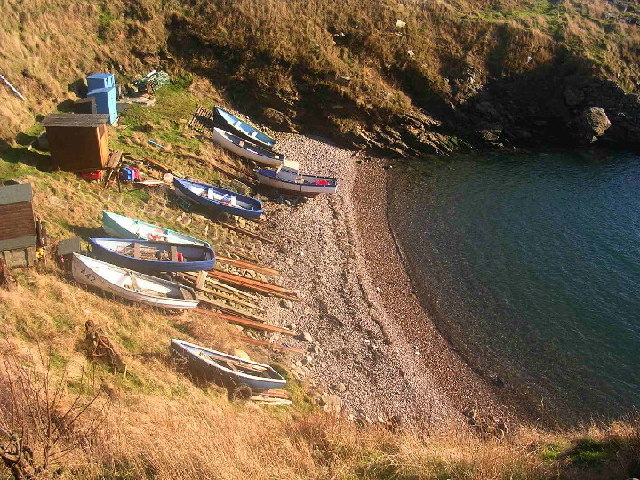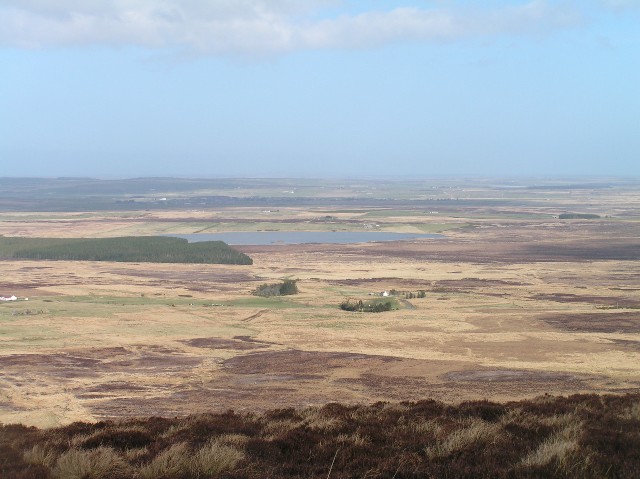|
3rd Sutherland Fencibles
The plan of raising a fencible corps in the Highlands was first proposed and carried into effect by William Pitt the Elder, (afterwards Earl of Chatham) in the year 1759. During the three preceding years both the fleets and armies of Great Britain had suffered reverses, and it was thought that a "home guard" was necessary as a bulwark against invasion. In England county militia regiments were raised for internal defence in the absence of the regular army; but it was not deemed prudent to extend the system to Scotland, the inhabitants of which, it was supposed, could not yet be safely entrusted with arms because of The 'Fifteen' and The 'Forty-Five' rebellions. Groundless as the reasons for this caution undoubtedly were in regard to the Lowlands, it would certainly have been hazardous at a time when the Stuarts and their adherents were still plotting a restoration to have armed the clans. An exception, however, was made in favour of the people of Argyle and Sutherland, and accordi ... [...More Info...] [...Related Items...] OR: [Wikipedia] [Google] [Baidu] |
Fencible
The Fencibles (from the word ''defencible'') were British regiments raised in the United Kingdom, Isle of Man and in the colonies for defence against the threat of invasion during the Seven Years' War, the American War of Independence, the French Revolutionary Wars, the Napoleonic Wars and the War of 1812 in the late 18th and early 19th centuries. Usually temporary units, composed of local recruits and commanded by Regular Army officers, they were usually confined to garrison and patrol duties, freeing Regular Army units to perform offensive operations. Most fencible regiments had no liability for overseas service. They included naval forces known as "River Fencibles", made up of sailors on the Thames and other southern English towns and cities, as well as Sea Fencibles, who, among their other duties, crewed small commercial vessels converted to coastal defence. History The first regiments were raised in Scotland in 1759. In England county militia regiments were raised for inte ... [...More Info...] [...Related Items...] OR: [Wikipedia] [Google] [Baidu] |
Lairg
Lairg ( gd, An Luirg, meaning "the shank/shin") is a village and parish in Sutherland, Scotland. It has a population of 891 and is at the south-eastern end of Loch Shin. Lairg is unusual in the northern Highlands in being a large settlement that is not on the coast. One of the reasons that Lairg is slightly bigger than other non-coastal Highland villages is its central location within the county of Sutherland. Having four roads which meet in the village, it used to be known as "The Crossroads of the North". In the 19th century, it was provided with a railway station (at ), on what is now the Far North Line. This development means that the north-west of Sutherland is now easier to reach. (The Far North Line links Inverness in the south with Thurso and Wick in the north.) Sheep sales Lairg is the location of the largest single-day sheep sale in Europe. These auctions take place in August and bring people from all over Scotland to buy or sell their animals. Gala Week In July, ... [...More Info...] [...Related Items...] OR: [Wikipedia] [Google] [Baidu] |
Samuel Macdonald
Sam McDonald (1762 – 6 May 1802), called "Big Sam", was a Scotsman of unusual height for his day who had a distinguished military career and was a noted "strongman". Most sources state his height as , with a burly build, although one 1822 source claims . Life Born in Lairg, Sutherland in 1762, he served in the 2nd Sutherland Fencibles 1779–83 and the Royal Scots 1783–1789 (where he served as Fugleman or drill-leader). From 1791 to 1793 he was employed by the Prince of Wales as lodge porter at Carlton House, and during this time appeared at the Drury Lane Theatre playing Hercules in "Cymon and Iphigenia". From 1793 to 1799 he was a sergeant in the 3rd Sutherland Fencibles, and from 1799 until his death in 1802 in the newly formed 93rd Sutherland. Due to his height and bulk he generally marched to the side of the formation, leading the regimental mascot, a deer. He was frequently detached for recruiting, and his image was later used on recruiting posters. Sergeant MacDo ... [...More Info...] [...Related Items...] OR: [Wikipedia] [Google] [Baidu] |
Portlethen
Portlethen (; gd, Port Leathain) is a town located approximately 7 miles south of Aberdeen, Scotland along the A92. The population according to the 2011 census was 7,130 making it the seventh most populous settlement within Aberdeenshire. To the east of Portlethen lie three fishing villages: Findon, Downies and Portlethen Village (now often referred to as ''Old Portlethen''). Although Portlethen has been granted official town status, it resembles a residential suburb without a clear 'town centre' or focal point. Geography Portlethen is a coastal town lying along the North Sea coast. A small island May Craig is situated off shore from Portlethen. Portlethen is located in the historic county of Kincardineshire. History Portlethen was originally a small fishing village. The harbour is located in what is now Old Portlethen, the original village on the coast about a half a mile east from Portlethen Parish Church. Portlethen lies about two kilometres east of the ancient ... [...More Info...] [...Related Items...] OR: [Wikipedia] [Google] [Baidu] |
Dunkirk
Dunkirk (french: Dunkerque ; vls, label=French Flemish, Duunkerke; nl, Duinkerke(n) ; , ;) is a commune in the department of Nord in northern France.Commune de Dunkerque (59183) INSEE It lies from the border. It has the third-largest French harbour. The population of the commune in 2019 was 86,279. Etymology and language use The name of Dunkirk derives from '' or ' |
Fort George, Scotland
Fort George is a large 18th-century fortress near Ardersier, to the north-east of Inverness in the Highland council area of Scotland. It was built to control the Scottish Highlands in the aftermath of the Jacobite rising of 1745, replacing a ''Fort George'' in Inverness constructed after the 1715 Jacobite rising to control the area. The current fortress has never been attacked and has remained in continuous use as a garrison. The fortification is based on a star design; it remains virtually unaltered and nowadays is open to visitors with exhibits and facsimiles showing the fort's use at different periods, while still serving as an army barracks. First Fort George The first Fort George was built in 1727 in Inverness; it was a large fortress capable of housing 400 troops on a hill beside the River Ness, on the site of (and incorporating portions of) the medieval castle that had been rebuilt as a citadel by Oliver Cromwell but later abandoned. The first commanding officer of ... [...More Info...] [...Related Items...] OR: [Wikipedia] [Google] [Baidu] |
Farr, Sutherland
{{Highland-geo-stub ...
Farr ( gd, Fàrr) is a parish in the county of Sutherland in the Scottish council area of Highland. The parish also includes a small hamlet named Farr. The village of Bettyhill lies less than to the west of the hamlet along the A836 road. Parish of Farr Villages and hamlets Villages and hamlets within the parish of Farr include: * Achiemore * Achina *Altnaharra * Armadale *Aultiphurst *Balnacraig *Bettyhill *Farr (the hamlet) * Lednagullin *Melvich *Strathnaver * Swordly *Upper Bighouse References Populated places in Sutherland Civil parishes of Scotland Farr, Sutherland Farr ( gd, Fàrr) is a parish in the county of Sutherland in the Scottish council area of Highland. The parish also includes a small hamlet named Farr. The village of Bettyhill lies less than to the west of the hamlet along the A836 road. Pari ... [...More Info...] [...Related Items...] OR: [Wikipedia] [Google] [Baidu] |
Caithness
Caithness ( gd, Gallaibh ; sco, Caitnes; non, Katanes) is a historic county, registration county and lieutenancy area of Scotland. Caithness has a land boundary with the historic county of Sutherland to the west and is otherwise bounded by sea. The land boundary follows a watershed and is crossed by two roads (the A9 and the A836) and by one railway (the Far North Line). Across the Pentland Firth, ferries link Caithness with Orkney, and Caithness also has an airport at Wick. The Pentland Firth island of Stroma is within Caithness. The name was also used for the earldom of Caithness ( 1334 onwards) and for the Caithness constituency of the Parliament of the United Kingdom (1708 to 1918). Boundaries are not identical in all contexts, but the Caithness area lies entirely within the Highland council area. Toponymy The ''Caith'' element of the name ''Caithness'' comes from the name of a Pictish tribe known as the ''Cat'' or ''Catt'' people, or ''Catti'' (see Kingdom of Ca ... [...More Info...] [...Related Items...] OR: [Wikipedia] [Google] [Baidu] |
William Wemyss
General William Wemyss of Wemyss (9 April 1760 – 4 February 1822) was a Scottish soldier in the British Army and Member of Parliament. Early life He was the son of the Hon. James Wemyss, third son of the 5th Earl of Wemyss, and his wife Lady Elizabeth Sutherland, only daughter of William Sutherland, 17th Earl of Sutherland. Career From 1784 to 1787 Wemyss was MP for Sutherland, succeeding his father, before sitting for Fife from 1787 to 1796 and again from 1807 to 1820. Military career Captain in the Army by brevet, 1 July 1783 DAG in Scotland and Major, 18 November 1786 DAG in Scotland and Lieutenant-Colonel, 1 October 1791 Colonel, 22 August 1795 He attained the rank of Major-General on 23 June 1798. Action near Ardee Major-General William Wemyss raised the 93rd Sutherland Highlanders in 1799 for his cousin the 16-year-old Countess of Sutherland, Elizabeth Sutherland Leveson-Gower. Men were recruited to the Regiment through a highly original form of conscription. ... [...More Info...] [...Related Items...] OR: [Wikipedia] [Google] [Baidu] |
Elizabeth Gordon, 19th Countess Of Sutherland
Elizabeth Sutherland Leveson-Gower, Duchess of Sutherland (''née'' Sutherland; 24 May 176529 January 1839), also '' suo jure'' 19th Countess of Sutherland, was a Scottish peer from the Leveson-Gower family, best remembered for her involvement in the Highland Clearances. Biography Elizabeth was born at Leven Lodge near Edinburgh,. to William Sutherland, 18th Earl of Sutherland and his wife Mary (c. 1740–1766), daughter and coheir of William Maxwell. Her parents died of " putrid fever" (typhus) in Bath in 1766, a few weeks after her first birthday. As the younger and only surviving child, she succeeded to her father's estates and titles. Her title of Countess of Sutherland was contested by Sir Robert Gordon, Baronet, a descendant of the 1st Earl of Sutherland, but was confirmed by the House of Lords in 1771. Childhood and marriage Lady Elizabeth Sutherland spent most of her childhood living in Edinburgh and London, where she was educated between 1779 and 1782. On 4 Sept ... [...More Info...] [...Related Items...] OR: [Wikipedia] [Google] [Baidu] |
Aberdeen
Aberdeen (; sco, Aiberdeen ; gd, Obar Dheathain ; la, Aberdonia) is a city in North East Scotland, and is the third most populous city in the country. Aberdeen is one of Scotland's 32 local government council areas (as Aberdeen City), and has a population estimate of for the city of Aberdeen, and for the local council area making it the United Kingdom's 39th most populous built-up area. The city is northeast of Edinburgh and north of London, and is the northernmost major city in the United Kingdom. Aberdeen has a long, sandy coastline and features an oceanic climate, with cool summers and mild, rainy winters. During the mid-18th to mid-20th centuries, Aberdeen's buildings incorporated locally quarried grey granite, which may sparkle like silver because of its high mica content. Since the discovery of North Sea oil in 1969, Aberdeen has been known as the offshore oil capital of Europe. Based upon the discovery of prehistoric villages around the mouths of the rivers ... [...More Info...] [...Related Items...] OR: [Wikipedia] [Google] [Baidu] |


.jpg)



